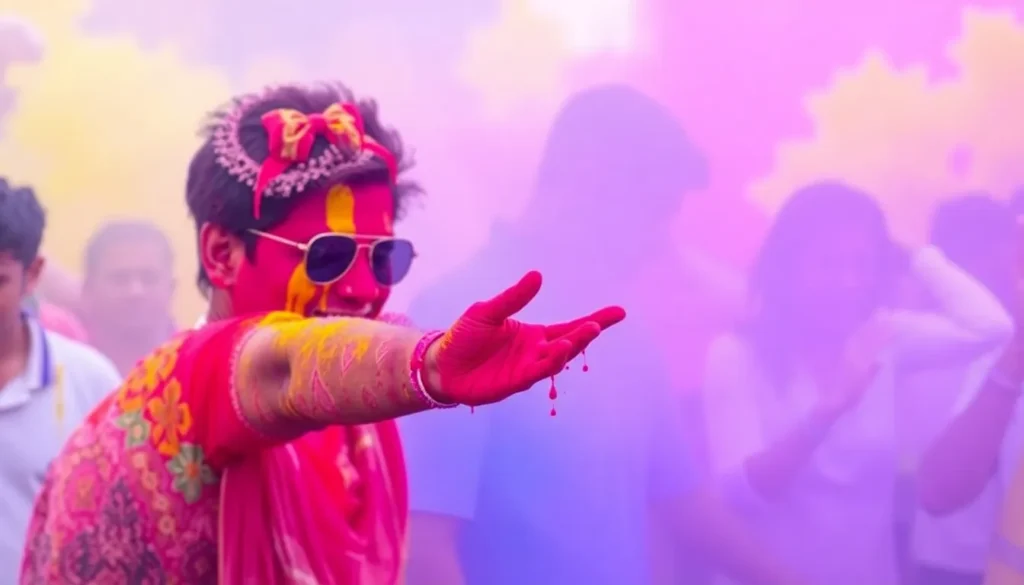What is Holi the Color Festival of India

- Holi festival in India
- Understanding the essence of the Holi celebration
- Historical background of Holi
- The colorful celebration of Holi
- The significance of colors used in Holi
- Unique traditions during Holi
- Holi celebrations beyond India
- Upcoming Holi celebrations in 2025
- Conclusion: Why you should experience Holi
The vibrant festival of Holi is not just a celebration; it is a profound cultural expression that resonates deeply within the hearts of millions. This festival of colors, celebrated primarily in India and Nepal, symbolizes the victory of good over evil and the arrival of spring. If you have ever wondered what makes Holi so captivating, read on to explore its rich history, traditions, and the joy it brings to people across the globe.
Holi festival in India
Holi is one of the most significant festivals in the Indian cultural calendar. Celebrated with great enthusiasm across the country, it usually falls in March, marking the end of winter and the arrival of the vibrant spring season. Cities and towns transform into a kaleidoscope of colors as people gather to throw colored powders, dance, and rejoice.
During this festival, the air is filled with laughter, music, and the sweet aroma of traditional delicacies. The sense of community and togetherness is palpable as friends, families, and even strangers come together to celebrate.
Understanding the essence of the Holi celebration
At its core, Holi is more than just a festival of colors; it is a celebration of life itself. This festival invites everyone to set aside their differences and come together in harmony. It is a time for forgiveness, the strengthening of relationships, and the formation of new bonds.
- Unity: Holi fosters a sense of togetherness amongst people of diverse backgrounds.
- Joy: The celebration is filled with laughter, dancing, and singing, promoting happiness.
- Tradition: Holi is steeped in cultural traditions and rituals that have been passed down through generations.
- Renewal: It symbolizes the renewal of life and the end of negativity.
Historical background of Holi
The historical significance of Holi dates back to ancient Hindu mythology. The festival commemorates the legend of Holika and Prahlad. Holika, the sister of Hiranyakashipu, a demon king, was killed in a fire when she tried to burn her devotee brother, Prahlad, who was deeply devoted to Lord Vishnu. This tale of good triumphing over evil is celebrated every year during Holi.
The night before the festival, large bonfires are lit, symbolizing the burning of Holika. This event is known as Holika Dahan, where people gather around the fire, singing and dancing, marking the transition from darkness to light.
The colorful celebration of Holi
On the day of Holi, the atmosphere is electrifying. Streets become a battleground of colors, where everyone participates in the joyous riot of throwing colored powders, known as "gulal," and water balloons. These colors are derived from natural sources, such as flowers, herbs, and spices, celebrating the beauty of nature.
Participants often wear white clothing, which serves as a canvas, eagerly absorbing the vibrant colors. This playful exchange serves as a reminder of the beauty and joy that comes from embracing life and its imperfections.
The significance of colors used in Holi
Each color used during Holi carries its own significance:
- Red: Symbolizes love and fertility.
- Green: Represents new beginnings and the arrival of spring.
- Blue: Associated with Lord Krishna, symbolizing divine love.
- Yellow: Signifies knowledge and learning.
- Pink: Represents affection and harmony.
These colors not only add vibrancy to the celebration but also reflect the values and beliefs of the Hindu culture.
Unique traditions during Holi
Several unique traditions are associated with Holi, each adding to the festival's charm:
- Bhang: A traditional drink made from cannabis leaves, often consumed during the festivities for its euphoric effects.
- Rang Barse: A popular song sung during Holi, encouraging everyone to join in the celebration.
- Community gatherings: Neighbors and friends come together, often sharing sweets and snacks as a gesture of goodwill.
Holi celebrations beyond India
While Holi is primarily an Indian festival, its popularity has transcended borders. Various countries with significant Indian diaspora, such as Nepal, Mauritius, and the United States, celebrate Holi with their unique twists. In many Western countries, Holi has been embraced as a cultural festival, drawing in people from all backgrounds to participate in the joyous celebrations.
For those unable to travel to India, local celebrations are held in various cities around the world, including Barcelona, where you can experience the vibrant atmosphere of Holi.
Upcoming Holi celebrations in 2025
Mark your calendars! In 2025, Holi will be celebrated on March 17. As the festival approaches, many cities will begin planning events, parades, and gatherings to mark this joyous occasion. It’s an ideal time to engage with your community, learn about the traditions, and even participate in local celebrations.
To immerse yourself in the spirit of Holi, check out this vibrant video that showcases the essence of the festival:
Conclusion: Why you should experience Holi
Experiencing Holi is an opportunity to embrace joy, love, and community. The festival serves as a reminder of the beauty of human connection, celebrating the diversity of culture and tradition. Whether you are participating in the colorful festivities in India or attending a local celebration, Holi is an experience that will surely leave you with lasting memories and a deeper appreciation for the richness of life.





Deja una respuesta